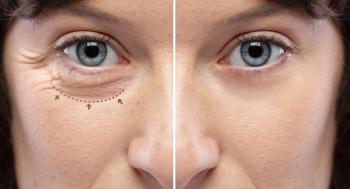
Ruth Hogg, PhD, on what retinal imaging can tell clinicians about the brain and body
With detailed imaging and cognitive data, the Northern Ireland Cohort for the Longitudinal Study of Aging highlights the potential of integrating eye scans into broader health research.
Multimodal retinal imaging is opening new doors in the study of systemic health, said Ruth Hogg, PhD, at the 2025 International SPECTRALIS Symposium — And Beyond (ISS), held June 13-14 in Heidelberg, Germany. Drawing on data from the Northern Ireland Cohort for the Longitudinal Study of Aging (NICOLA), Hogg demonstrated how advanced ocular imaging—when integrated with genetic, cognitive, and lifestyle data—can uncover early clues about conditions like dementia, diabetes, and kidney disease.
Hogg is a Professor in the School of Medicine, Dentistry and Biomedical Sciences and the Centre for Public Health at Queen's University Belfast, Northern Ireland.
Here, she tells Ophthalmology Times Europe about her presentation—and puts out a call to action for other practitioners working with epidemiological or clinical datasets.
Please share some background on NICOLA. This is a very large cohort of aging people. Who is included and what data are being collected?
Ruth Hogg, PhD: NICOLA began in 2013 with the main aim to discover the drivers of healthy aging within Northern Ireland. A representative sample was established of 8,309 participants over the age of 50 with the plan to follow them up over time. At baseline participants underwent an extensive home interview to understand their health, lifestyle and financial situation. It included questions about health, diet, work, family and social networks, income and benefit receipts, quality of life, cognitive functioning, daily activities, housing, retirement and pensions. The effect of 'the troubles' on the lives of people was also explored adding a unique aspect to the study. Participants were also invited to attend a health assessment at the Northern Ireland Clinical Research Facility at which a range of measurements were taken, including cognitive tests, cardiovascular and respiratory function tests, body composition tests and an eye component (visual acuity, auto refraction, intra ocular pressure and multimodal retinal imaging). Blood and urine samples were also collected. A follow-up health assessment is currently in progress, which will provide 8-10 year follow-up information.
Focusing on ocular imaging, what multimodal tools are under assessment? What ocular pathologies are you monitoring?
Hogg: In addition to fundus photography of the disc and macula, we also obtained ultra-wide field images using the Optomap Tx100 and a Heidelberg Spectralis protocol that included a posterior pole OCT cube, RNFL OCT, quantitative auto fluorescence, dual-wavelength macular pigment assessment and multicolor images. We were particularly interested in the the major age-related eye diseases such as age-related macular degeneration, glaucoma and diabetic retinopathy. The OCTs also enabled us to report on vitreous interface changes on which there was limited data from population-based studies. We also undertook a detailed assessment of lesions in the retinal periphery using the Optomap images. The images were all graded by the NetwORC UK reading centre, which means we have a high quality well-labelled dataset that has been used by multiple external groups to validate artificial intelligence (AI) algorithms.
How do you use the imaging data alongside other data, such as self-reported vision outcomes and visual acuity screenings?
Hogg: The imaging data has proved particularly useful in combination with the genetic data and enabled us to take part in a variety of pooled analyses with other similar international studies. We have recently looked at visual impairment, including risk factors and causes though the prevalence is low in the baseline study.
This session at ISS is all about oculomics, and we see a lot of different systemic health concerns at play—kidney disease, cardiovascular risk, neurodegeneration. What are the key systemic insights you have gleaned so far?
Hogg: We’ve looked at various retinal markers of neurodegeneration that have been reported in the literature and we’re currently combining this together into a paper that will look at their comparative effect-sizes and relationships. Our sample size is now small in comparison with other large healthcare-based datasets that are commonly used to investigate these relationships, however the range of retinal imaging that we have means that comparative analysis is where our strength lies. We’ve also recently been part of an international analysis of fundus photographs using AI that related the retinal features to diabetic kidney disease, published in
At the ISS, I will be concentrating on one of our more novel markers obtained from the Heidelberg multicolor images. We’ve been working with collaborators from the University of Melbourne (Prof Bang Bui and Prof Christine Nguyen), who have developed and validated a method for extracting reflectance information from multispectral images. They’ve shown in animal models that it can be related to accumulation of beta-amyloid or alpha-synuclein in the retina, published in
Their initial data used a custom made hyperspectral device, but they’ve adapted the methodology for multicolor images and kindly shared their analysis pipeline to enable us to use it in NICOLA. We’ve been able to confirm a relationship between cognition as measured by the mini-mental state examination and a ratio of blue/infrared reflectance which is exciting given the wide availability of the device and ease of image acquisition. We also see a signal from those with increasing severity of diabetes and diabetic retinopathy which will require further investigation.
Are there any areas of systemic health that are a primary target for this study?
Hogg: While the overall study is multidisciplinary, the main focus is understanding dementia and NICOLA is part of the National Institutes of Aging Harmonized Cognitive Assessment Protocol (HCAP) network of studies which is trying to facilitate cross country comparisons through improving the methodologies used to measure and understand dementia risk around the world. While cross-sectional relationships between retinal imaging biomarkers and Alzheimer’s are well-established longitudinal data is relatively rare so longitudinal follow-up in NICOLA will be important.
Given the research interests of myself and Prof Tunde Peto, we are also focused on diabetes, which is also a significant issue within our older generation. The extensive genomic/epigenetic and nutrition and lifestyle data available in NICOLA will help us understand factors that drive progression once the follow-up data is available.
What are you hoping attendees take away from your presentation at the ISS?
Hogg: The multicolor images are more valuable that you might think, I’m also keen to initiate collaborations with other groups that may have multicolor images from epidemiological or clinical datasets to help clarify some of the relationships we are seeing eg there is a marked difference in the reflectance pattern between males and females which we currently can’t explain. Please get in touch!
Newsletter
Don’t miss out—get Ophthalmology Times updates on the latest clinical advancements and expert interviews, straight to your inbox.










































